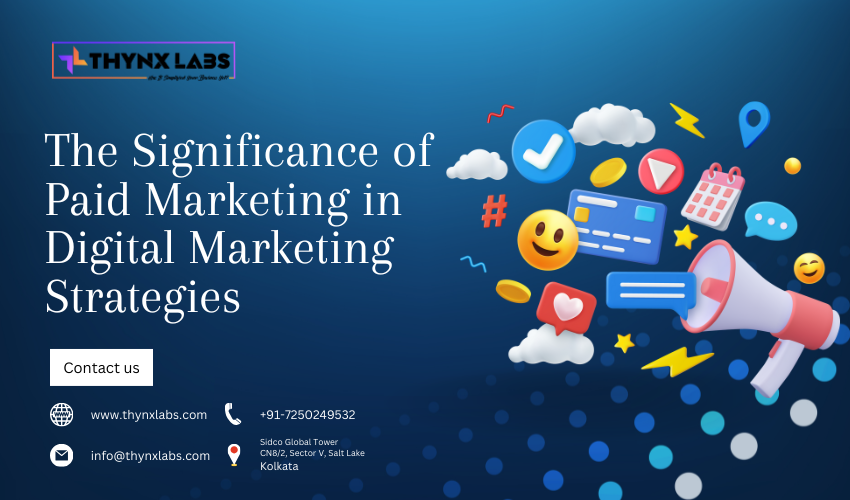Brand Marketing vs. Performance Marketing
Brand Marketing vs. Performance Marketing: Which Strategy Suits Your Business?
In the dynamic world of digital marketing, businesses often face the challenge of choosing the right marketing strategy to achieve their goals. Two prominent approaches are brand marketing and performance marketing, each offering unique advantages and serving different purposes. This article explores the differences between brand marketing and performance marketing, helping you determine which strategy aligns best with your business objectives.
Understanding Brand Marketing
- What is Brand Marketing?
Brand marketing focuses on building and maintaining a strong, recognizable brand identity. It emphasizes creating a positive image and emotional connection with your target audience. The goal is to establish long-term brand equity by increasing brand awareness, fostering customer loyalty, and differentiating your brand from competitors.
- Key Objectives of Brand Marketing
- Building Brand Awareness: Brand marketing aims to make your brand known to a broader audience. It involves creating memorable messages and visuals that resonate with your target market.
- Establishing Brand Identity: Consistent messaging and branding elements help shape how your audience perceives your brand. This includes logos, color schemes, and tone of voice.
- Creating Emotional Connections: By focusing on storytelling and brand values, brand marketing seeks to forge emotional bonds with customers, enhancing loyalty and trust.
Exploring Performance Marketing
- What is Performance Marketing?
Performance marketing is a results-driven approach that focuses on achieving specific, measurable outcomes. Unlike brand marketing, which prioritizes long-term brand building, performance marketing is centered around generating immediate, quantifiable results such as leads, sales, or conversions.
- Key Objectives of Performance Marketing
- Driving Conversions: Performance marketing strategies are designed to encourage users to take specific actions, such as making a purchase or signing up for a newsletter.
- Optimizing ROI: With a focus on measurable results, performance marketing aims to maximize return on investment (ROI) by continuously optimizing campaigns based on performance data.
- Tracking and Analyzing Results: Performance marketing relies on detailed analytics to track campaign effectiveness, allowing for real-time adjustments and improvements.
Comparing Brand Marketing and Performance Marketing
- Time Horizon and Goals
- Brand Marketing: Typically focuses on long-term goals such as building brand equity and loyalty. It involves activities like sponsorships, content marketing, and brand storytelling.
- Performance Marketing: Emphasizes short-term, measurable goals. It includes tactics like pay-per-click (PPC) advertising, affiliate marketing, and retargeting.
- Measurement and Metrics
- Brand Marketing: Success is measured through metrics like brand awareness, brand sentiment, and customer loyalty. These metrics are often qualitative and can take time to show results.
- Performance Marketing: Success is measured through specific KPIs such as click-through rates (CTR), conversion rates, and cost-per-acquisition (CPA). Metrics are quantitative and provide immediate feedback.
- Approach and Execution
- Brand Marketing: Involves creating a consistent brand message and image across various channels. It focuses on long-term strategies and building a brand narrative.
- Performance Marketing: Centers around targeted campaigns and tactical execution. It focuses on driving direct actions and leveraging data for optimization.
Choosing the Right Strategy for Your Business
- Assess Your Business Goals
- Brand Building: If your primary goal is to build a strong brand presence and establish long-term customer relationships, brand marketing is essential. It’s ideal for businesses looking to differentiate themselves and create lasting brand equity.
- Driving Immediate Results: If your goal is to achieve quick, measurable outcomes such as generating leads or driving sales, performance marketing is more suitable. It’s effective for businesses with specific, short-term objectives.
- Consider Your Target Audience
- Brand Marketing: Best suited for businesses targeting a broad audience and looking to influence brand perception and loyalty.
- Performance Marketing: Ideal for businesses with a clear target audience and a focus on converting leads into customers.
- Evaluate Your Budget and Resources
- Brand Marketing: Requires a longer-term investment and often involves higher costs for creative development and brand-building activities.
- Performance Marketing: Allows for more control over budget allocation and offers flexibility with cost-per-click or cost-per-impression models.
Integrating Both Strategies
Many successful businesses integrate both brand marketing and performance marketing to leverage the strengths of each approach. A balanced strategy can build brand equity while also driving measurable results. For example, you might use brand marketing to create awareness and build loyalty, while employing performance marketing tactics to drive immediate sales or leads.
Conclusion
Choosing between brand marketing and performance marketing depends on your business objectives, target audience, and resources. Brand marketing is crucial for long-term brand building and emotional connections, while performance marketing focuses on achieving immediate, measurable outcomes. By understanding the key differences and aligning your strategy with your business goals, you can effectively maximize your marketing efforts and drive success.


